Today, minimalism reigns in much of the decorative carpet world. No borders, no traditional patterns, no classic design protocols. It is all so new, or is it?
You might be surprised to discover that borderless carpets, with minimal or even no patterns, in monochrome colors, were a considerable design thing in America in the 1930’s. The Great Depression affected domestic carpet demand. A flood of Persian goods shouldered aside the dominant Chinese carpets in the 1930’s and exports plummeted. Prices fell and manufacturers’ cost had to be reined in. This meant less design and faster weaving times, reducing labor costs. The trend from jazzy 1920’s Art Deco to more hard edged, more graphic 1930’s Art Deco can be seen in carpets from both European and Chinese sources.
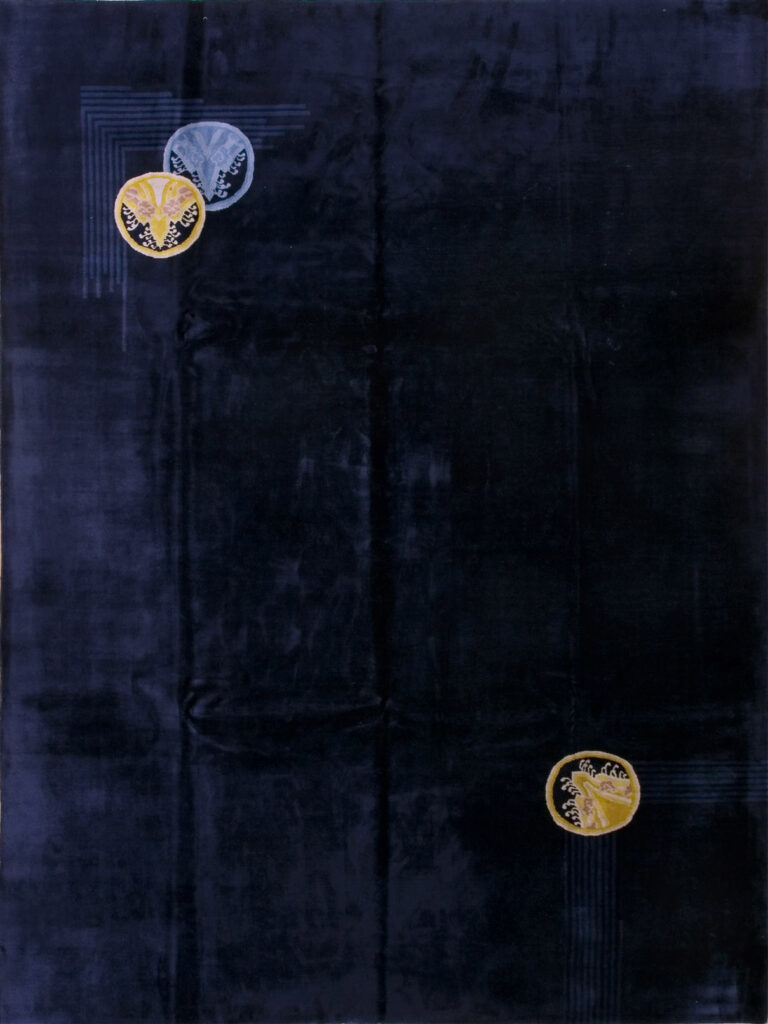
Nichols was the leading, most stylish of the American firms in Tientsin, and most attuned to decorative trends. This group of progressively more minimalist Nichols antique Chinese Art Deco carpets is the result. One of the first things is to eliminate the borders, producing a uniform single allover tonality. On this is laid an asymmetric, two corner pattern. In our number 20288 (sold), the saturated navy ground is open except for two mountain “coins” in one corner and one diagonally across. These are most subtly embedded in tone-on-tone striated segments. The rich midnight ground does the talking here, a minimalism with a real presence.
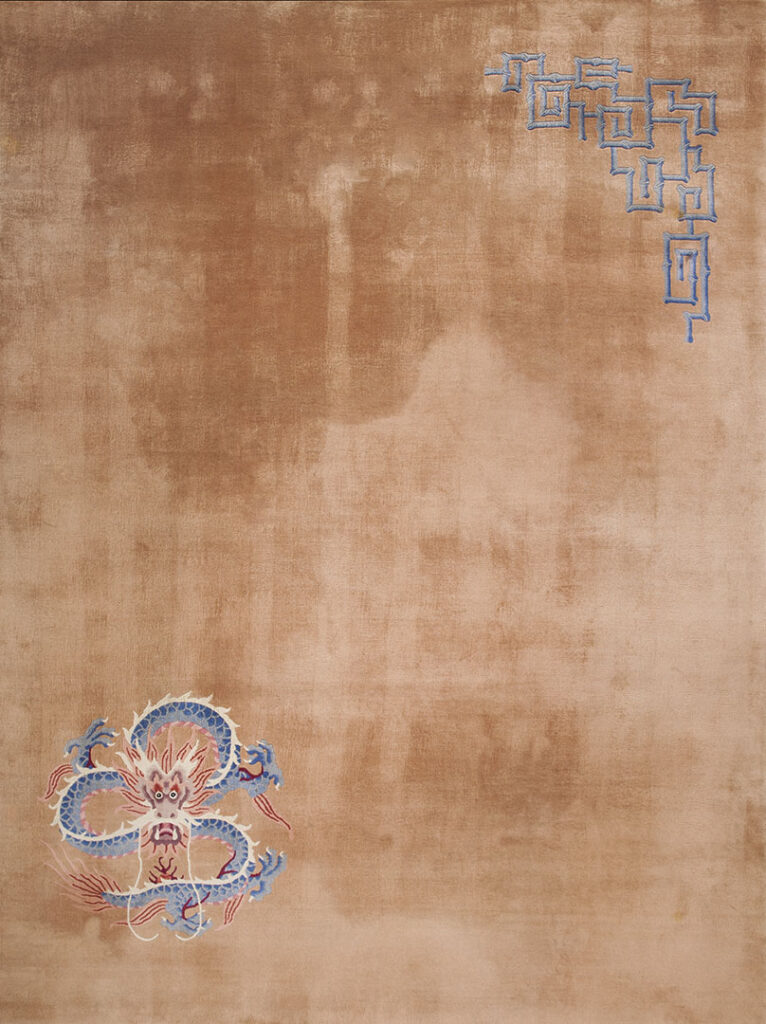
Minimalism does not have to mean self effacing. Orange-pink, never found in nature, gives a real punch to our 22091 (12’0″x9’0″, c. 1920) with bamboo fret and writhing dragon diagonally opposed in the corners. Today, minimalist means taupe, tan, beige, ivory, straw or some other non-color, totally inoffensive, total ignorable. You just can’t ignore Deco Chinese minimalist carpets.
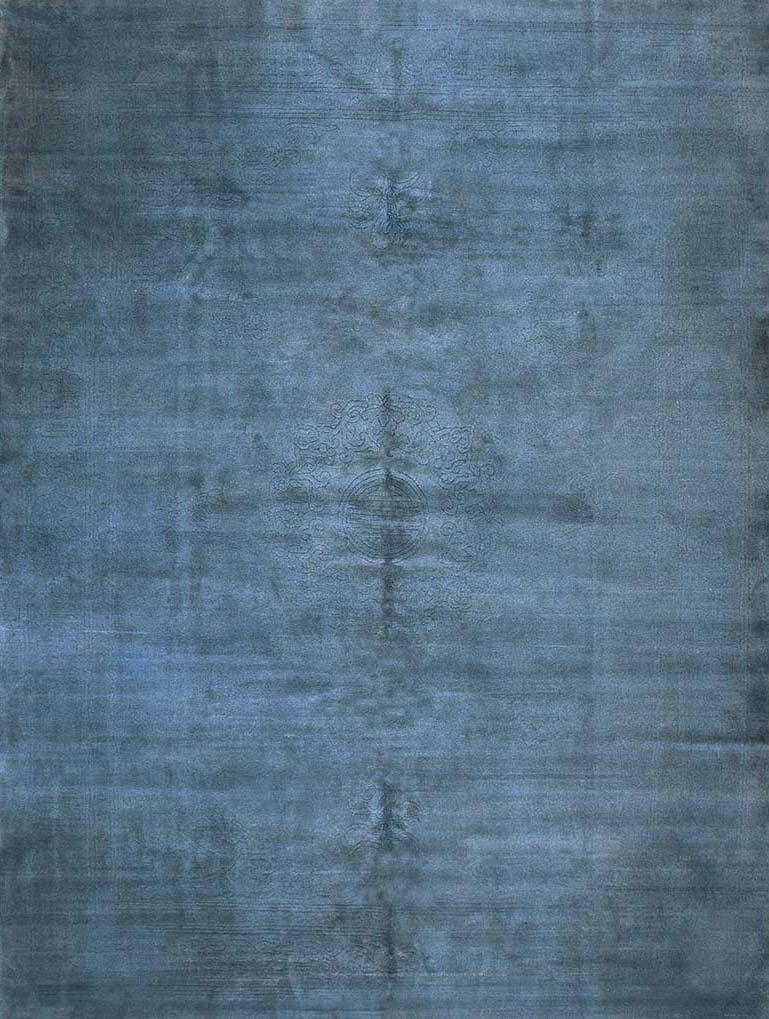
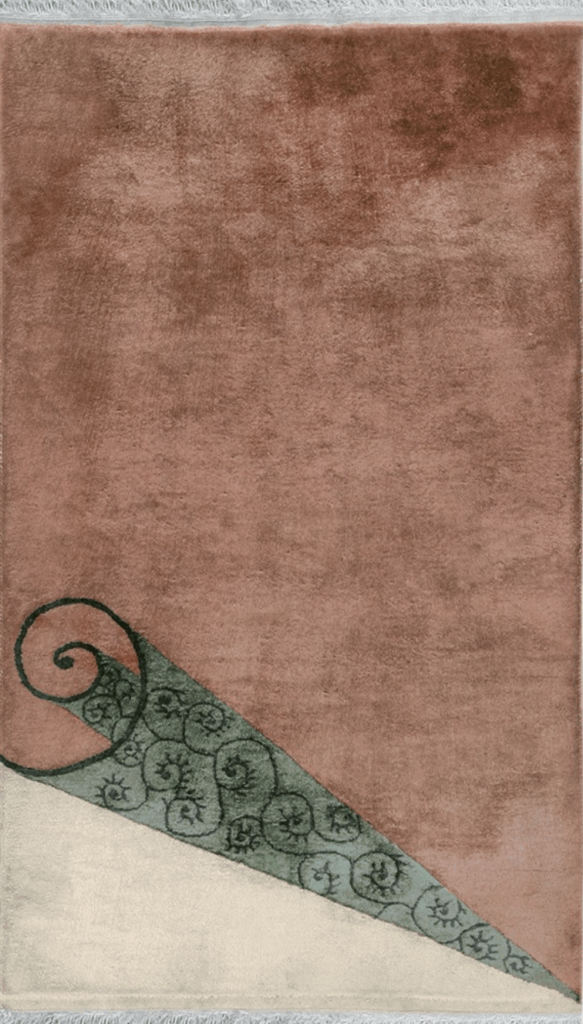
Almost as restrained in pattern is our royal blue carpet number 22616 (13’2″x10’0″, early 1930, sold) with a design wholly delineated by carving alone. The color is magnificent and the subtle pattern makes the viewer’s eye work a bit, which should happen when appreciating a work of art. A close-up picture gives an idea of the subtle style of this piece.
Another borderless trompe l’oeil rug, 21790 (3’0″ x 4’10”, 1930) displays a soft red scroll rolled back in one corner to revel a scroll patterned underside and an ivory triangle beneath. The rug has a three dimensional character.
Finally, two carpets with the same open fields, and geometric bud and rectangle opposite corners are number 20997 (11’4″x8’8″ c. 1930, royal blue) and 21781 (11’3″x8’6″, c. 1930, cardinal red) are wholly in the 30’s style, sharply drawn with a pars-pro-toot rendering of floral ornament. The corners cannot be ignored, but the almost minimalist fields easily dominate.
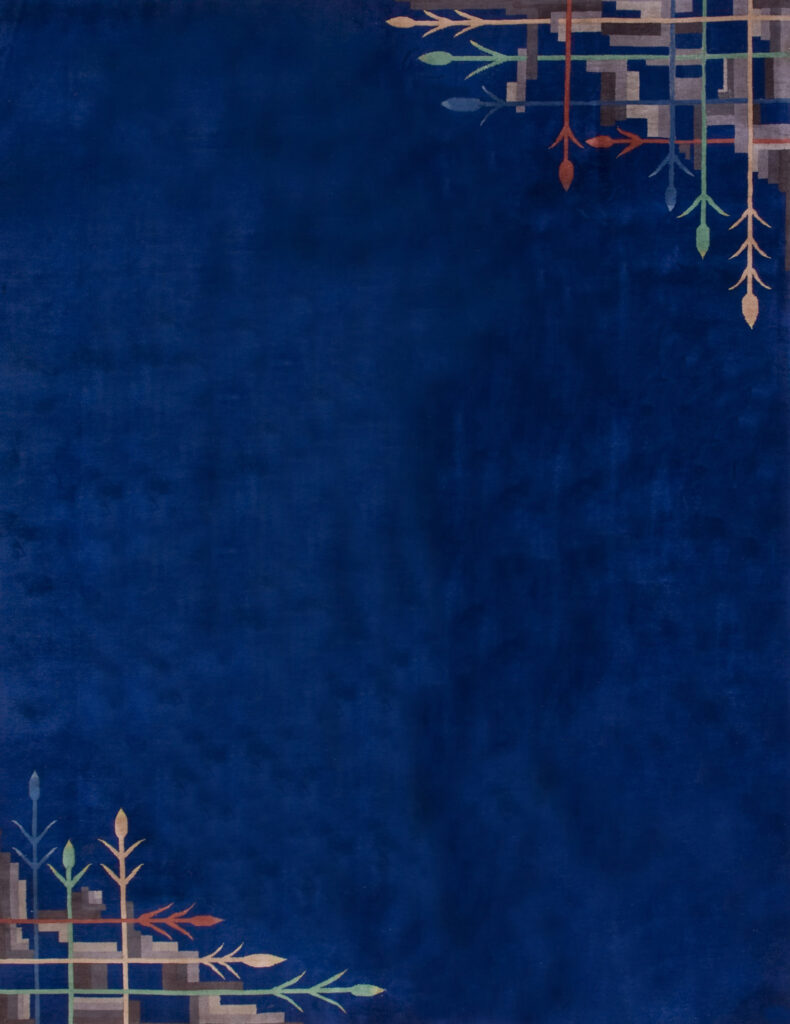
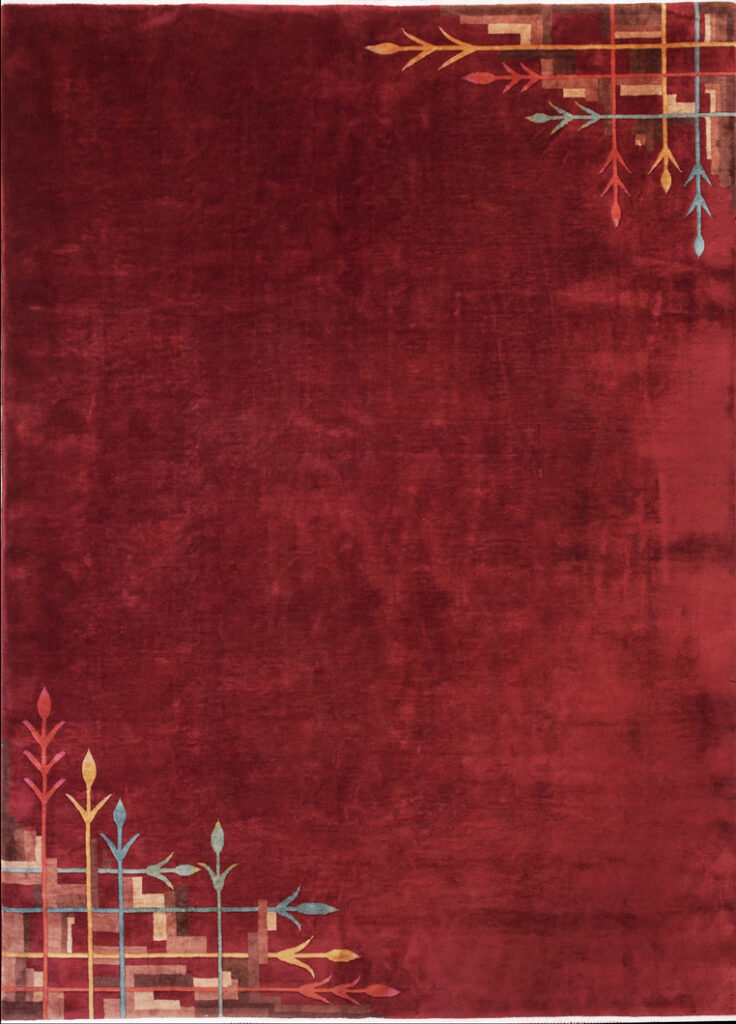
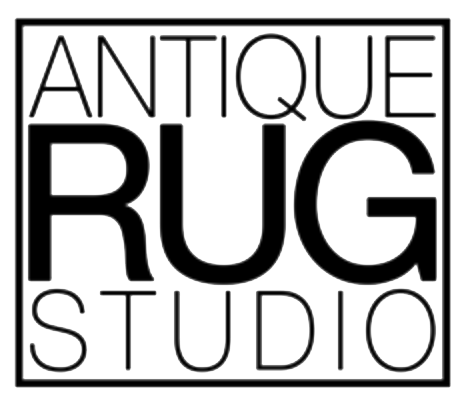
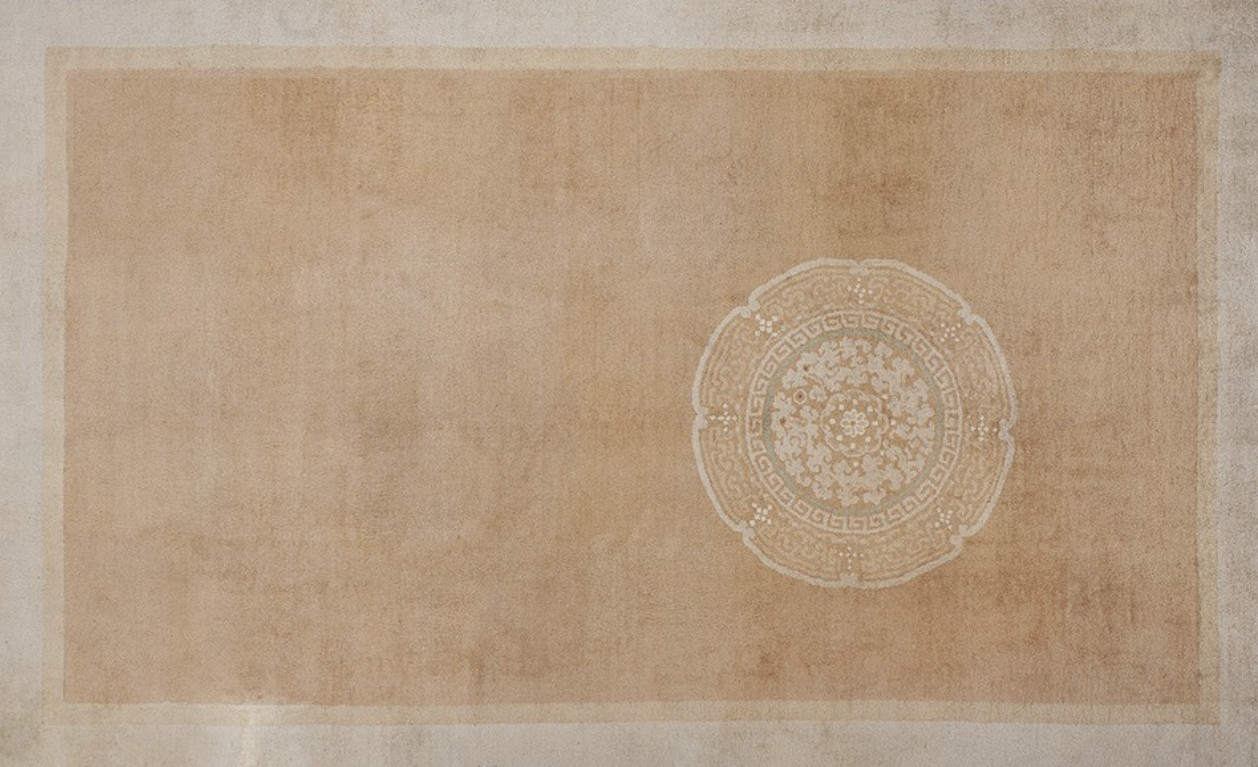
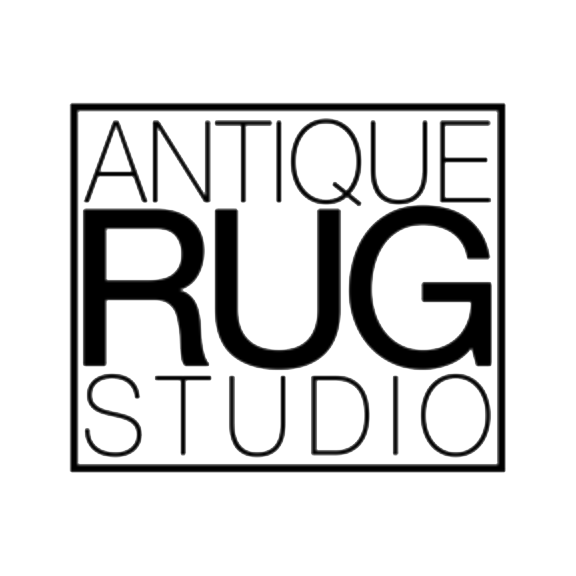
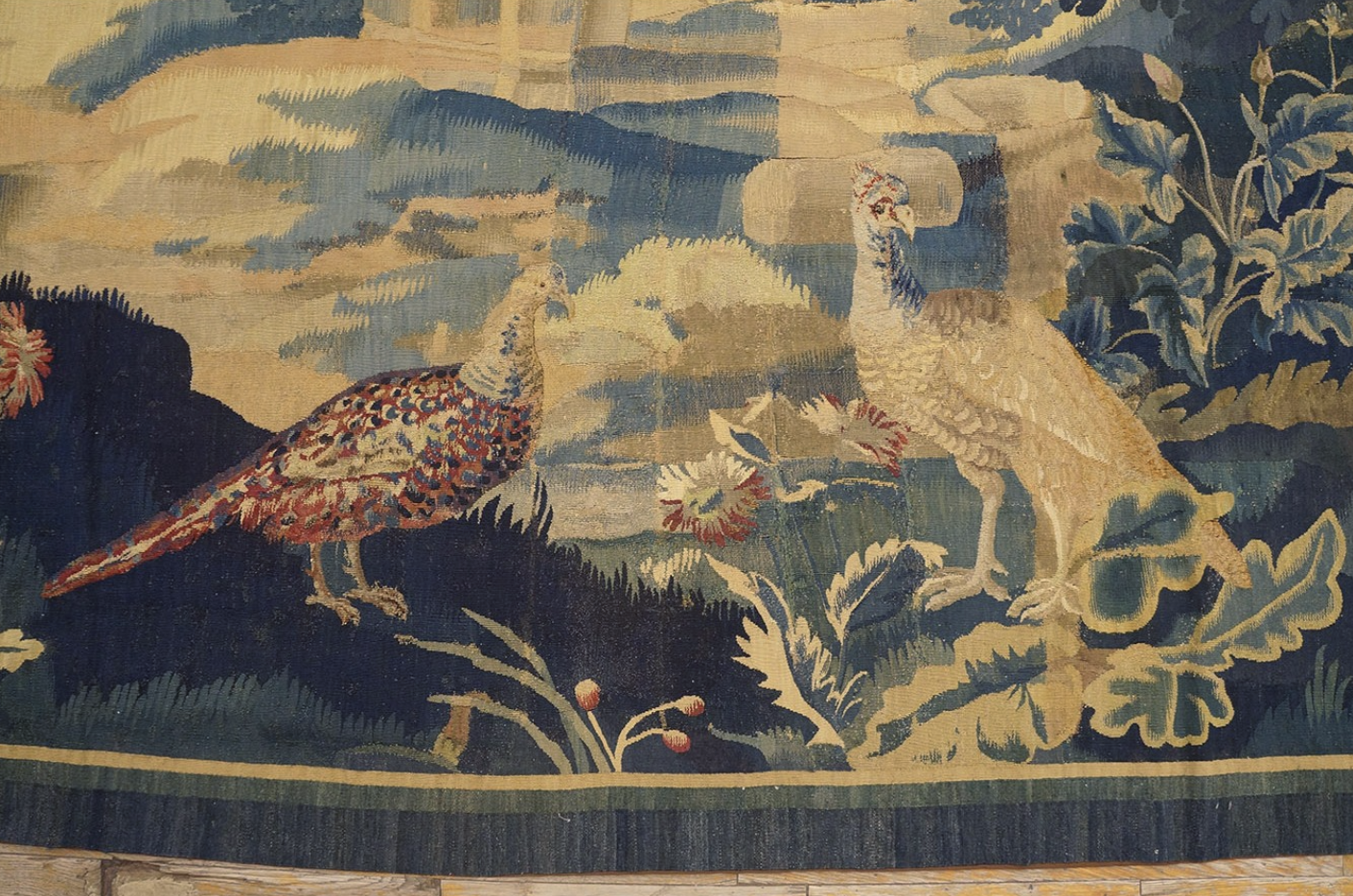
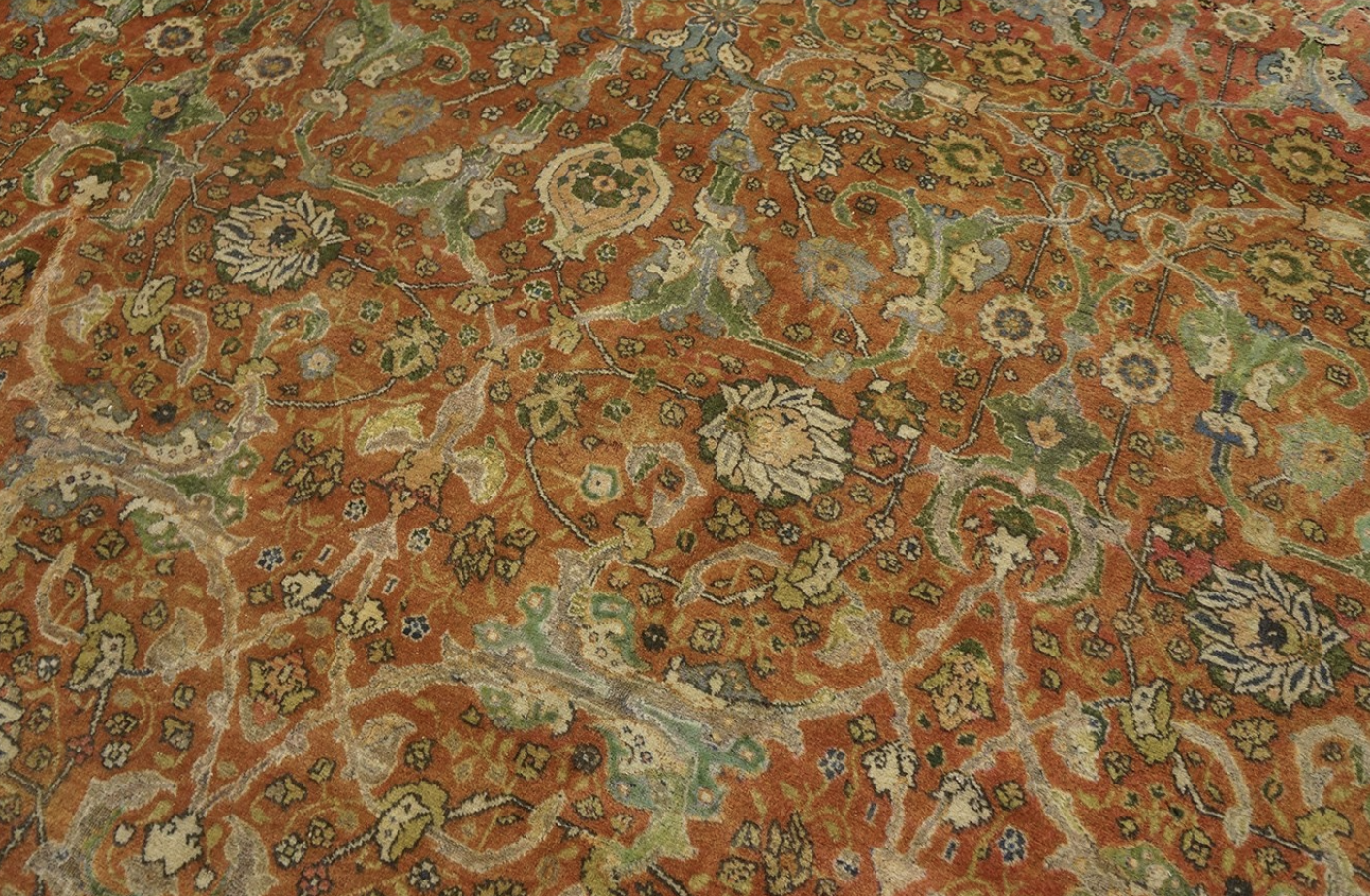

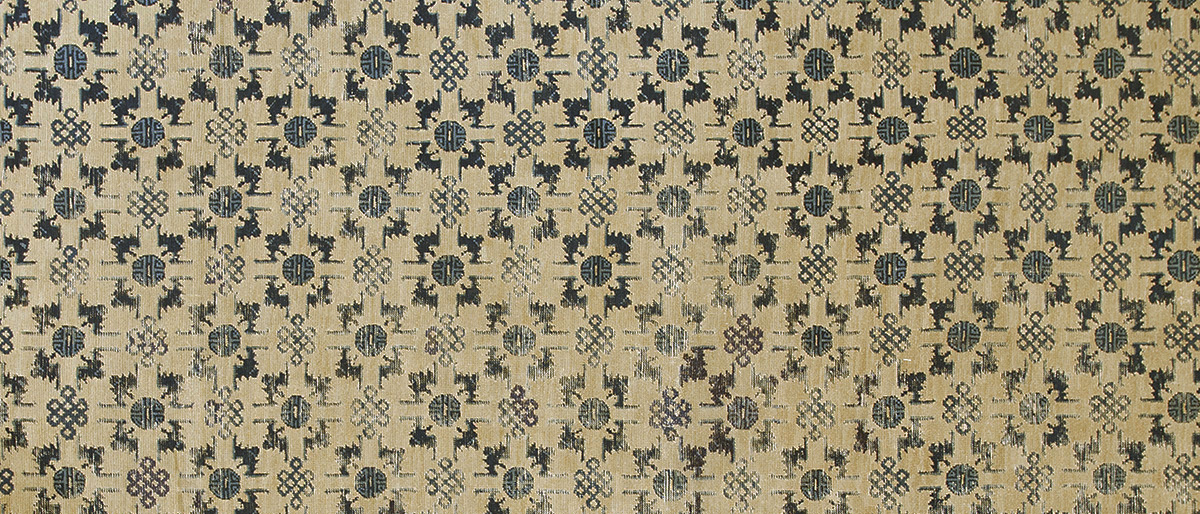
Leave a Reply